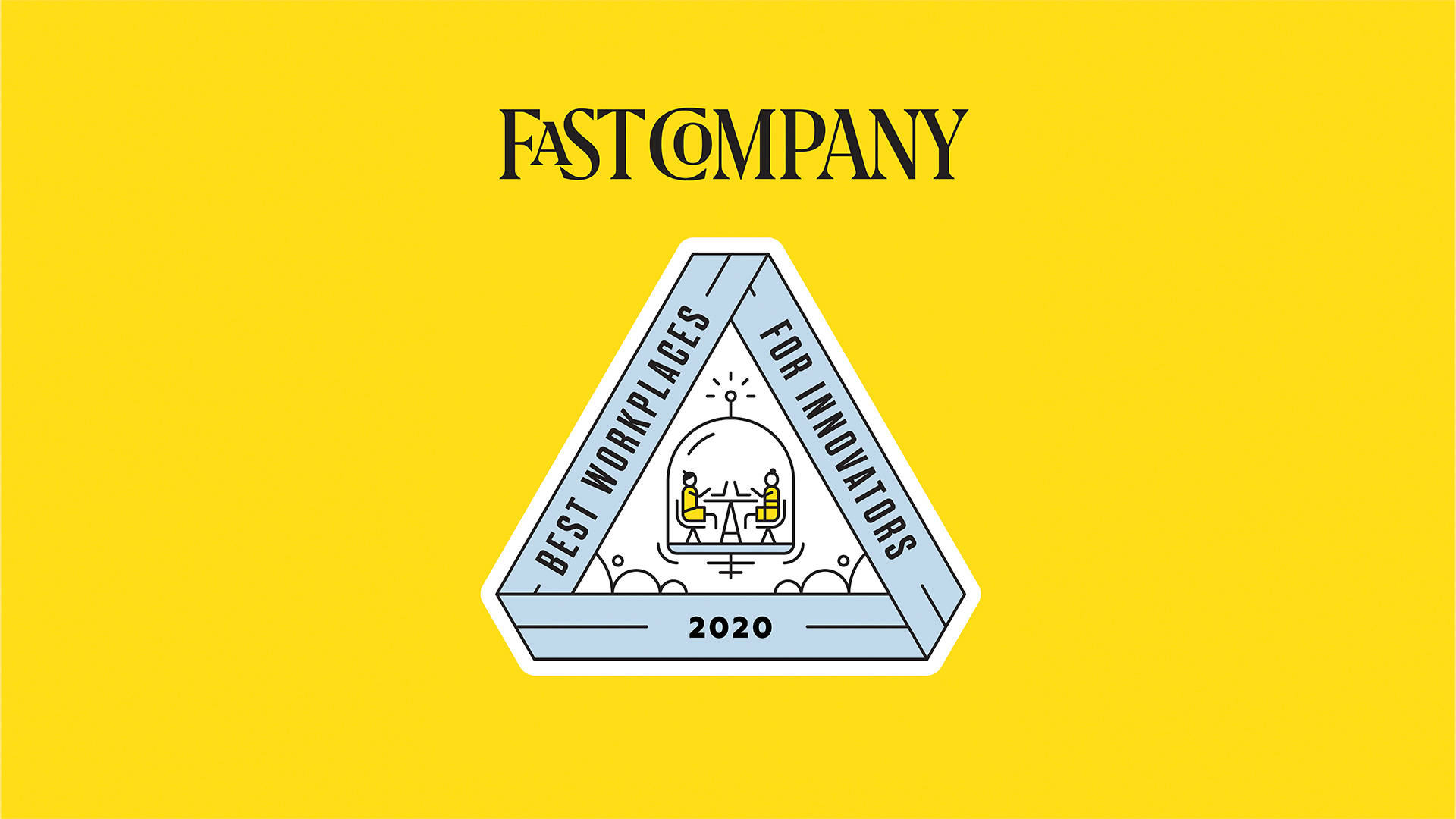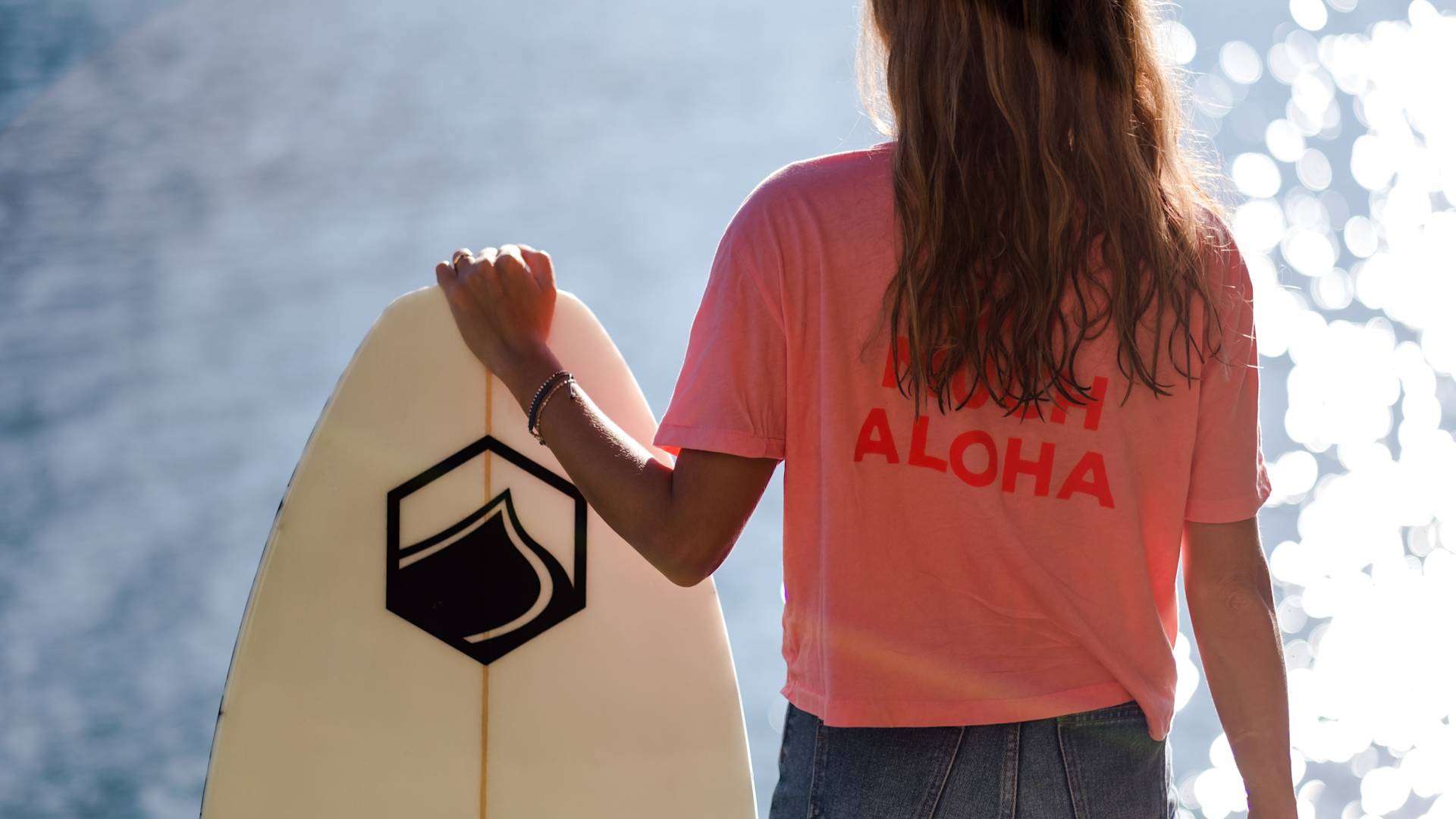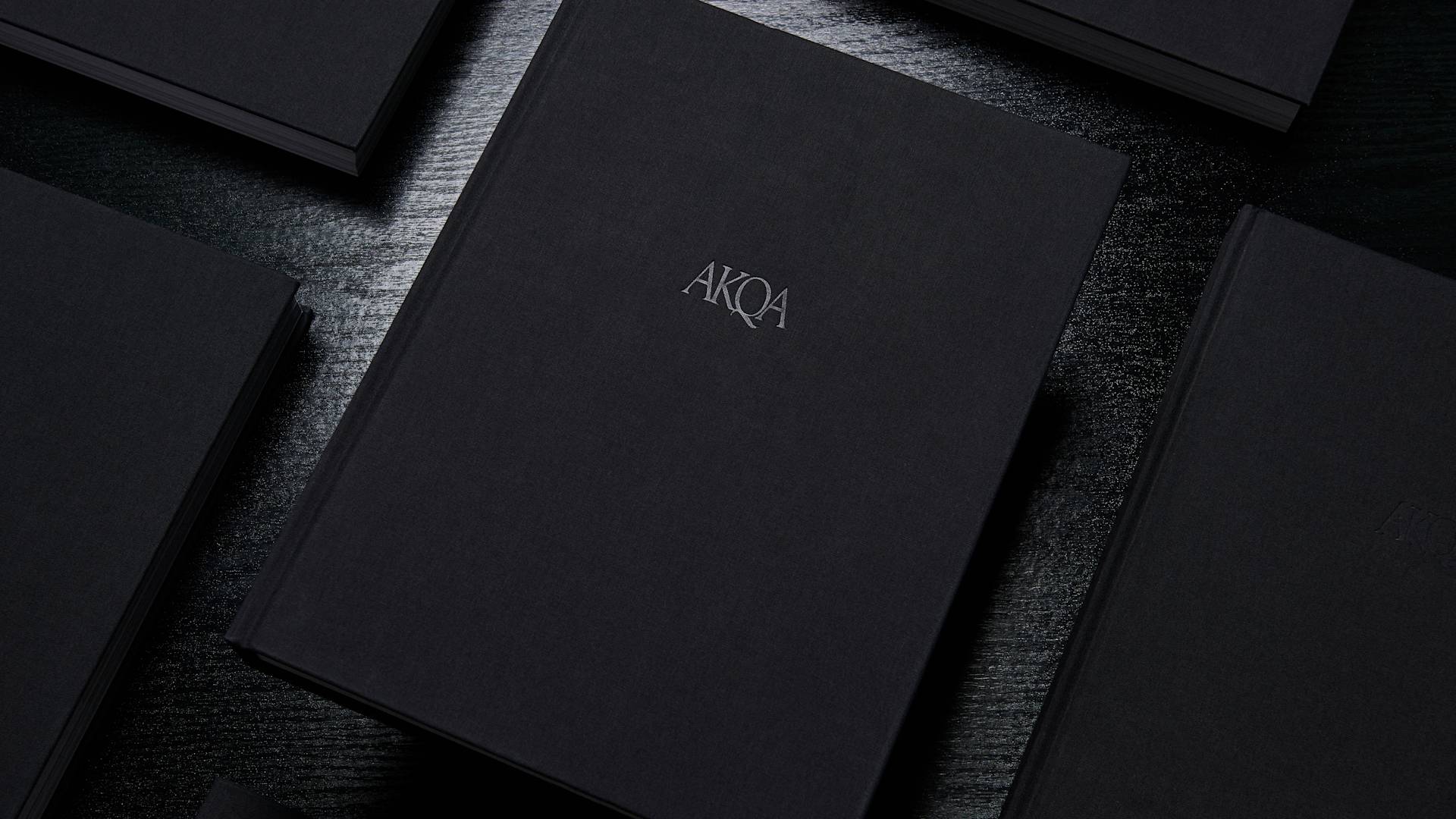Our people
How I got here: Hillary Coe

Designer, drag racer and analogue astronaut Hillary Coe has joined AKQA as principal of experience, following a position as director of design at SpaceX. She talks about creating roles for herself that didn’t exist and embedding adventure into her life and work.
Growing up in LA, Hillary developed a sense of curiosity and a penchant for storytelling which she later translated into a career working at globally renowned companies. She has previously held creative director positions at TBWA\Chiat\Day and Google and has freelanced for clients such as Intel and Apple. In between all of this, she has taken on modelling gigs, broken a world record in drag racing and volunteered as an analogue astronaut, which involves doing field tests in locations that have similarities to extreme space environments (she recently returned from a simulated version of Mars).

An early education in storytelling
I was a real latchkey kid. I didn’t really have those connections to family – my father worked, my mother worked and I was always kind of left to my own devices. Us artists are strange anyway – I always had trouble communicating with people so I would tend to make up stories in my head, especially having so much time to myself – climbing trees and stuff.
I would create these worlds that I could bring people into or at least attempt to, and that to me started to distil the power of storytelling and what it could do to the human spirit and how we connect to each other. It was the only way that I could connect to other kids.
A thirst for adventure
My father used to ride motorcycles and fly planes when I was younger. I believe my mother forced him out of it, because he had two children. We come from a long line of Air Force pilots and I just remember watching my father clean off his plane after we would meet him at the airport, or he would have me in the car as he would go out and just do some practice patterns, and I was just so enthralled with it.
As a kid, you watch all these cartoons or dream, and then you look at your father and see him actually flying. There’s no one else in that plane, it’s not like a 747 - he is that plane; my father can fly. I just thought that was such magic and it really stuck with me. I remember being so enamoured by space and feeling like every time he would take off, he was going into space! I felt like that was a special place that only [Carl Sagan] and my father had access to.
As I got older, I got into auto racing, just because I was always curious about how things worked - as much of a creative storyteller as I was, there’s this part of my brain that kept sneaking up like ‘ooh, I want to take this apart and see how it works’. It’s the story of most engineers, like ‘I'm just curious about how this thing works’ and I had that side of me too, though I always kind of identified as an artist.
There was this car club at school, and they were taking apart these complex engines, and it just enthralled me. I ended up finding myself at a drag strip and there was some team and they had let me sit in the car and I’m like, ‘I don’t want to sit in this thing, I want to drive it!’ So they let me be a mechanic for a couple of years until I earned their trust and I ended up breaking the record for diesel truck in drag racing I think when I was 20. I had to stop because I was going to college and showing up in my fire suit covered in grease -apparently, people just don’t like that.

Revaluating everything
My father, he got leukaemia when I was 19 and I finished up school, barely, right after he had passed away my senior year. My father, he was my hero in the skies. So when that happened, that was a tremendous loss. I had been going to film school and I had this trajectory of ‘I’m telling linear stories, I'm going to film school, this is it’. After my father had passed, it’s like you look at everything in your life and everything changes.
I found myself living in Europe, paying off some student loans by modelling, but also just because somebody approached me and was like, ‘do you want to do runway modelling? You’ll get to travel the world for free’. And I’m like, ‘Sure, I need to find myself, let’s do this’. So I came back, I co-ran a production company that did the downtown LA Art Walk and Fashion Week for Los Angeles, and I started to realise that maybe there’s something to this storytelling that’s not just a linear film.
I ended up working at Chiat\Day. I was really fortunate to work underneath Lee Clow, who was the marketing director for Steve Jobs for a time. He really became a mentor to me for four years or so of how to mix this idea of the emerging digital media, interactivity, but also just always having at the core really bold, iconic visual design. That’s something that I really connected with.
Bridging the gap between people and tech
After I left Chiat, I went over to Google and for a year a half, I was working on the special projects team within Google. They were just establishing Material Design, which is their visual branding language, and how they dealt with certain materials. How do you bring all of those applications together within one visual roof?
I think that’s where I was able to have a lot of fun with these brilliant engineers in terms of brainstorming. You have the technology, how do we create something from this? How do we not do what Google Glass did - which is an amazing piece of technology, but when you can’t figure out what the human interaction point is, what is the purpose of it? What’s that connection to make someone’s life better? You have some journalists look at it and be like, ‘that is a spy camera’ and suddenly that’s the narrative. So I think they recognised how absolutely important it was not only to define the brilliant technology, but how does it connect with people? I think that’s something that Steve Jobs did really well, was really thinking through from ground one what that human component would be.

Finding her way to SpaceX
In [the field of] aerospace there’s always been that barrier to entry. This is for the rocket scientists. This isn’t for the artists or the fluffy creative types, right? I kept thinking about it and dreaming about it. I went in for an interview with NASA and I just felt like, OK, government agency, they’re beholden to taxpayers. I don’t know if they’re really ready to make the excuse for ‘Yeah, we hired a creative director’ So I started looking at what SpaceX was doing.
People asked what was drawing me to SpaceX. To be honest, it was seeing everything that was wrong - not to say that there were tremendous things wrong with SpaceX, but there was so much opportunity. They were creating this reusable vehicle that was going to lower the financial playing field for people to send things and humans and everything into space. This was the type of innovation that was going to lend itself to the next era of human spaceflight. Looking at that, and looking at that narrative, and how powerful that was - seeing a company whose story was still kind of stuck in dos aerospace, from branding to website design to communications and interfaces, and ship design, everything - I was just like, this is an open playing field.
I started asking around, does anyone know how I can get a hold of someone at SpaceX, because I have this crazy idea. There’s not a role for me but I think they need it. So I found myself in an interview room with Elon Musk, and I remember the day before I was equal parts just absolutely terrified and absolutely exhilarated. It’s like you know what needs to be done and yet you’ve never done this before. Of course, you’re second guessing yourself, like is this going to work? So I left that man’s office with a task: you’ve got three months to prove to me that this is a thing and that you can do this.

Designing for the future of aerospace
I spent three months on contract and they created a role for me. I think we ended up calling it director of design for lack of a better term. It was basically giving me full rein to really redefine what the story, what the narrative, what the visual was for what SpaceX was going to be doing in its future, which is launching human beings into space as a private company. So it was so many eighteen hour days and weekends, and in aerospace, you have so many requirements that you have to meet, right? That is the priority, the priority is not to necessarily make the ship look like it’s got James Turrell lighting, it’s about making sure that everything operates correctly, that the astronauts are thriving once they get to the Space Station.
Navigating an unconventional career path
Shifting careers four times so far - I mean, that’s a challenge; you’re always learning something new or feeling a little bit like a fish out of the water. It’s that kind of imposter syndrome of what am I doing here? I have to invent my own rules, because I’m not an engineer and I don’t necessarily understand this system or structure, but I understand the fundamentals of telling a story and how to connect to humanity, how to connect to what a person’s needs are to make their life better. And I think that’s the common thread that no matter what industry I’ve been able to immerse myself in, that’s been the point.

Taking the leap from aerospace to AKQA
After you’re working on commercial spaceflight and Mars missions, it’s like, how do you top that? But I think after setting the path for the Dragon programme and Starship moving forward, I always like to make an impact and I wanted to go somewhere where I can make an impact, not just for one company, but I want to continue to expand on that entire industry. When you’re working for a singular company, that becomes a little bit difficult.
In a nutshell, my role at AKQA as I see it is to be able to think harder about these companies and what problems they’re trying to solve for a customer, for humanity, for nature, for the hearing impaired. How do we work within that and provide the tools, not only engineering or development technology expertise, but also the human experience expertise? To make this much more real than a company just having a board meeting could come up with. I really think that’s important for the future of what advertising and creative agencies are.

Levelling the playing field
Social media, for all that it is, I think it has provided such an amazing community of these women who have done the thing that you don’t expect to see: engineering sciences, math. I’ve just been so excited about joining these kinds of communities on social media, and especially Twitter. You’ve got Emily Calandrelli, who has Emily’s Wonder Lab that Netflix picked up and she is teaching kids, and especially girls, how to do science, but speaking about it in a way that is no like, we’re making things explode, but how amazing it is to be curious about how things work.
I think it’s all about giving permission for these girls, especially, but these young people who might feel like, I don’t match up to that - I don’t see myself as some engineer in cargo shorts doing equations in my head all day. Well, I’m an artist, and I was able to really help contribute to what the future of human spaceflight looks like, feels like - and I felt the same way. I was terrified sitting there the night before I was supposed to go into that office at SpaceX and convince somebody that they needed me, where I don’t think I saw myself in anybody there before. So I think it’s about lowering that permission standard. It’s like, No, you can play in this space - come play with us. There’s a place for you. I owe it to my past self, I owe it to my childhood self, who was sitting up in trees making other worlds, to say that you have a permission to play in that space, in the science field, in aerospace, in tech.
Original article by Megan Williams, Creative Review



